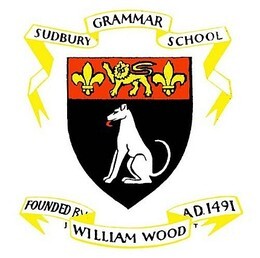Late in the 14th century, Simon of Sudbury, Lord Chancellor to Richard II and later Archbishop of Canterbury founded a College in Sudbury, an entirely religious house with a Warden and officers of nearby St Gregory’s Church. But in the early Renaissance, the primacy of the church was challenged, the printing press arrived and the demand for lay education increased. In 1491, William Wood, the Warden of Sudbury College, left in his will property, land, gardens and an orchard, for the founding of Sudbury Grammar School where a Master of Grammar taught local boys religious instruction, Latin, Greek and rhetoric. By 1569 the school was partly supported by a gift of a farm made by the Paston family. Between 1714 and 1755 a Rev Humphrey Burrough was curate-in-charge of St Gregory's and master of the school attended by his sister’s son Thomas Gainsborough.
After 1847, the original school building was demolished and a new school house and classroom built. SGS, then an endowed school with a board of governors, became financially unstable and so in 1909 was transferred to the West Suffolk County Council.
There were over 100 pupils after WW1; numbers increased to 150 following reorganisation of secondary education in Hadleigh (1923) and later in Haverhill. In 1941, the ‘new wing’ comprising classrooms, an assembly hall, a lab and a library was built. By 1944, entry was entirely by selection through the 11-plus exam. By 1954, the school had 10 masters and educated 175 boys.
There were 1298 Grammar schools in England and Wales in 1964 and now over 160 remain, mainly in SE England. No new ones have been established since 1998 when a Labour Government made their creation illegal. The arguments for and against grammars and selection, and their function of furthering social mobility, have continued ever since.
In 1972, following country wide introduction of the comprehensive non-selective system, SGS (and the Girls High School and the Secondary Modern School) closed and pupils and masters transferred to Sudbury Upper School. The integration was initially difficult with major discipline problems, and as a consequence several of the ex-SGS masters chose to leave teaching. In 2012, the school became the Sudbury Ormiston Academy, a 11-16 secondary school with a strong emphasis in the performing arts.
SGS is remembered by those whose education enriched their lives and increased their social mobility. And it is remembered for the talented young men who distinguished themselves in society and contributed so much to our country, as artists, archaeologists, academics, statesmen, lawyers, medical experts, journalists, architects and teachers.
For more detail see the SGS history given in a series of contributions by John Gambart Webb to the OBA Magazine (July 2006, Jan 2007]
RAF 15.4.2024 [revised 29.12.2024]
